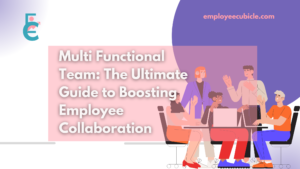If you are looking for a simple but powerful way to increase job satisfaction among your employees, you might want to consider employee meals. Employee meals are the food and drinks that you offer to your workers for free or at a low cost. They can range from snacks and beverages to full-fledged lunches and dinners. They can be served in different ways, such as catering, vending, cafeteria, or vouchers.
Employee meals might seem like a minor perk, but they can have a huge impact on job satisfaction. Job satisfaction is how happy and content your employees are with their work. It depends on many factors, such as salary, benefits, environment, relationships, recognition, and growth opportunities. Job satisfaction matters because it affects how well your employees perform, how long they stay, how motivated they are, and how healthy they are.
Benefits of Employee Meals for Job Satisfaction
Offering employee meals can have a positive impact on job satisfaction for a variety of reasons. Here are some of the benefits:
- Nutrition and Health: When companies offer meals, they often have control over the quality and nutritional value of the food. This means they can prioritize whole, nutritious ingredients, minimizing processed foods and unhealthy options. Healthy meals can lead to improved cognitive function, better mood regulation, and decreased risk of chronic diseases.
- Convenience: The time saved from not having to prepare, commute, or queue for a meal can accumulate significantly over time. For employees with family commitments or those pursuing further studies or personal projects, this extra time can be invaluable.
- Cost Savings: Financial stress is a significant concern for many individuals. By providing meals, companies can help alleviate some of this stress, allowing employees to allocate their personal finances to other essential or desired areas.
- Increased Productivity: Beyond just the reduced break time, when employees eat a balanced meal, they’re less likely to experience energy crashes. Consistent energy levels mean that the work quality remains steady throughout the day.
- Team Building: Sharing a meal can break down hierarchical barriers. Managers, executives, and entry-level employees dining together can create a more egalitarian culture and foster open communication.
- Attracting and Retaining Talent: In competitive industries, perks like free meals can be the deciding factor for a potential hire choosing between job offers. For existing employees, it’s a daily reminder of the benefits of staying with the company.
- Consistent Energy Levels: Fluctuating blood sugar levels, often a result of irregular or unhealthy meals, can affect mood, energy, and concentration. Regular, nutritious meals can ensure employees remain attentive and in good spirits.
- Supporting Special Diets: It’s an inclusive practice to cater to various dietary needs. When employees see that their personal needs and preferences are acknowledged and respected, it builds trust and loyalty.
- Reducing Stress: Removing daily decision fatigue related to meals can lead to better mental clarity. Employees can then focus this mental energy on their tasks, leading to increased creativity and problem-solving abilities.
- Environmental Benefits: By bulk ordering and minimizing packaging waste, companies can also reduce their environmental impact. This is not just good for the planet but can also align with the values of environmentally-conscious employees, further boosting job satisfaction.
In essence, offering meals to employees can create a positive feedback loop. Satisfied, healthy, and motivated employees are more likely to be productive and remain loyal to the company, which in turn benefits the business’s bottom line.
Economic Impact of Employee Meals on Companies
The economic impact of providing employee meals on companies is multifaceted. It’s important to weigh both the costs and potential benefits to determine the overall economic implications. Let’s break down these impacts:
Costs:
- Direct Costs:
- Procurement: This involves the cost of sourcing ingredients or ready-made meals.
- Infrastructure: Setting up and maintaining a kitchen or dining facility requires capital. This includes appliances, furnishings, and other equipment.
- Staff: If employee meals are prepared in-house, companies would have to hire chefs, kitchen staff, and possibly even nutritionists.
- Waste Management: Leftovers and food waste need to be managed, which can entail additional costs.
- Indirect Costs:
- Administration: Managing meal programs can require administrative support, from coordinating with vendors to managing meal schedules.
- Logistics: This involves ensuring timely delivery and distribution of Employee meals, especially if multiple locations are involved.
Benefits:
- Employee Productivity:
- Employees may take shorter lunch breaks since they don’t need to leave the premises.
- Proper nutrition can lead to improved concentration and reduced fatigue, which can elevate productivity levels.
- Reduced Absenteeism:
- Better health from nutritious Employee meals can lead to fewer sick days taken by employees.
- Talent Attraction and Retention:
- Offering meals can be a competitive advantage in attracting top talent.
- Employee retention rates may improve, reducing costs associated with turnover, such as hiring and training.
- Enhanced Morale and Company Culture:
- A positive work culture can lead to improved job performance.
- Employee satisfaction can also translate to better customer service and improved client relations.
- Potential Tax Benefits:
- In some jurisdictions, providing meals to employees might be tax-deductible, leading to potential savings.
- Reduced Overhead in Other Areas:
- Companies might spend less on other perks or benefits if they offer Employee meals, thus leading to overall cost savings.
Considerations:
- Scale and Efficiency: As the number of employees grows, the per-unit cost of providing meals might decrease due to economies of scale.
- Local Cost Variations: The cost of offering meals will vary based on the local price of food, labor, and facilities. In some areas, it might be more economical than in others.
- Strategic Partnerships: Companies can enter into agreements with local restaurants or catering services for discounted rates, thus reducing costs.
- Feedback and Optimization: Regular feedback from employees can help optimize the meal program to ensure maximum benefit and reduce waste.
In the end, while there’s a clear cost to providing employee meals, the potential benefits, both direct and indirect, can make it a strategically sound economic decision for companies. However, the true economic impact will vary based on the company’s size, location, industry, and the specific way in which the meal program is implemented.

Tips for Designing an Effective Employee Meal Program
Let’s delve even deeper into these factors, adding layers of understanding and potential actionable steps:
- Food Quality
- Taste:
- Importance: A positive meal experience directly correlates with a positive mood and increased productivity.
- Actionable Steps: Hiring experienced chefs, incorporating employee recipe suggestions, and organizing taste-testing sessions.
- Freshness:
- Importance: Consuming fresh Employee meals can lead to better digestion and overall health.
- Actionable Steps: Partner with local farmers or produce suppliers for daily fresh deliveries, and avoid bulk storing.
- Nutritional Value:
- Importance: Nutrition plays a pivotal role in cognitive functions and energy levels.
- Actionable Steps: Engage a nutritionist to oversee the menu and provide nutritional breakdowns.
- Variety
- Menu Rotation:
- Importance: Psychological studies highlight that variety can reduce monotony and increase satisfaction.
- Actionable Steps: Introduce weekly or bi-weekly menus, ensuring a mix of old favorites and new dishes.
- Cultural Diversity:
- Importance: Respects and acknowledges the diverse backgrounds of employees.
- Actionable Steps: Organize monthly “world cuisine” days featuring dishes from different cultures.
- Dietary Options
- Special Diets:
- Importance: Ensures inclusivity and shows care for employee well-being.
- Actionable Steps: Regularly update dietary requirements through employee surveys and incorporate those findings in meal planning.
- Allergens:
- Importance: Prevents health incidents and ensures everyone can eat safely.
- Actionable Steps: Train kitchen staff on allergen awareness and contamination prevention.
- Presentation and Cleanliness
- Food Presentation:
- Importance: Visual appeal can enhance the perceived taste of the meal.
- Actionable Steps: Organize regular workshops on modern plating techniques.
- Hygiene:
- Importance: Directly tied to the health of the employees and the reputation of the organization.
- Actionable Steps: Implement strict hygiene protocols and regular health inspections.
- Portion Sizes
- Importance: Balancing portion size helps reduce food waste and ensures satiety.
- Actionable Steps: Use portion-controlled serving tools and offer options for varying appetites.
- Timing and Convenience
- Importance: Ensures that meals align with the body’s natural hunger patterns and work schedules.
- Actionable Steps: Create multiple meal windows, especially in organizations with flexible hours.
- Ambiance
- Importance: A pleasant ambiance promotes relaxation, aiding in better digestion and overall well-being.
- Actionable Steps: Invest in aesthetic interior designs, incorporate indoor plants, and ensure natural lighting where possible.
- Feedback Mechanism
- Importance: Continuous feedback is the backbone of improvement.
- Actionable Steps: Introduce digital kiosks for instant feedback, and hold quarterly focus group discussions.
- Cost/Value for Money
- Importance: Directly correlates with the perceived value of the job benefits.
- Actionable Steps: Offer a range of Employee meals catering to different budgets without compromising on quality.
- Special Initiatives
- Health Initiatives:
- Importance: Contributes to long-term employee health and reduces sick days.
- Actionable Steps: Organize health challenges, like “salad week” or “smoothie days”.
- Sustainability:
- Importance: Shows organizational responsibility towards the environment.
- Actionable Steps: Implement waste-reduction strategies and partner with sustainable suppliers.
- Dietary Education
- Importance: Empowers employees to make informed food choices.
- Actionable Steps: Host nutrition workshops, distribute educational pamphlets, and introduce labeled meal sections like “Heart Healthy” or “Brain Boosting”.
- Customization Options
- Importance: Encourages employees to actively engage with their food choices.
- Actionable Steps: Set up DIY stations, such as sandwich bars, or offer mix-and-match meal components.
- Special Events or Themed Employee Meals
- Importance: Boosts morale and introduces novelty in the routine.
- Actionable Steps: Collaborate with employees to decide themes or celebrate various global festivals.
In-depth consideration and attention to these facets of an employee meal program will not only provide physical nourishment but will also cater to the psychological and emotional well-being of the staff, fostering a nurturing workplace environment.
How to Measure impact of Employee Meals Program?
Employee meals have a notable impact on job satisfaction, encompassing benefits from improved health to strengthened community bonds. Businesses on the fence: it’s time to consider or amplify your meal programs. This gesture is more than just food—it’s a step towards a holistic approach to employee well-being. Beyond meals, a comprehensive well-being strategy is essential. After all, a nourished employee leads to a flourishing company. Let’s begin this journey at the lunch table.
Measuring the impact of employee meal programs on job satisfaction involves a combination of quantitative and qualitative methods to get a holistic view of the influence. Here’s how organizations can approach this:
- Surveys and Questionnaires:
- Frequency: Periodically distribute these to employees, e.g., quarterly or bi-annually.
- Questions to Include: Ask about the overall satisfaction with the meal program, its perceived value, and its influence on their daily job satisfaction.
- Metrics: Use a Likert scale (e.g., 1-5) to quantify satisfaction levels.
- Focus Groups:
- Gather a diverse group of employees to discuss their experiences with the meal program in depth.
- This can provide qualitative insights into specific aspects of the meal program that might be affecting job satisfaction.
- Employee Turnover Rate:
- Monitor and analyze turnover rates before and after implementing or changing the meal program.
- A decrease in turnover might suggest that the program, among other factors, is contributing to higher job satisfaction and retention.
- Absenteeism and Productivity:
- Track absenteeism rates. Improved nutrition might lead to better health and fewer sick days.
- Measure productivity metrics. A well-fed and satisfied employee might showcase better performance.
- Informal Feedback:
- Managers and HR personnel can have casual conversations with employees to gather anecdotal evidence of the meal program’s influence on job morale.
- Such informal feedback can provide insights not captured in structured surveys or focus groups.
- Comparison with Peer Companies:
- If possible, compare job satisfaction levels and employee retention rates with similar companies that don’t have an effective meal program.
- This can provide a relative perspective on the influence of meal programs on job satisfaction.
- Cost-Benefit Analysis:
- Calculate the cost of implementing and maintaining the meal program against the benefits gained. Benefits can include reduced turnover, reduced absenteeism, and improved productivity.
- This will provide a financial perspective on the program’s return on investment in terms of job satisfaction.
- Employee Onboarding Feedback:
- New employees can provide feedback on how the meal program influenced their decision to join the company and its impact on their initial job satisfaction.
- Comparing this with feedback from longer-tenured employees can show the program’s long-term versus short-term influence.
- Utilization Rates:
- Monitor how many employees are regularly using the meal program. High utilization can indicate that it’s a valued perk, influencing overall job satisfaction.
- Employee Advocacy:
- Track mentions of the meal program in employee reviews on platforms like Glassdoor or during exit interviews.
- Positive mentions can indicate the program’s role in job satisfaction.
When measuring impact, it’s essential to remember that while a meal program can significantly influence job satisfaction, it’s one of many factors in the broader context of workplace culture and benefits. Thus, it’s crucial to look at the data holistically and consider external variables that might be affecting job satisfaction.
Conclusion
The impact of an effective employee meal program goes beyond just satisfying hunger. It serves as a testament to an organization’s care and understanding, having a significant ripple effect on job satisfaction and loyalty. As a hidden catalyst for workplace morale, the right meal strategy can be a game-changer in fostering a motivated and contented workforce.
Share your experiences with employee meals in the comments, and for those keen on enhancing their own programs, explore our curated resources for valuable insights and tools.



